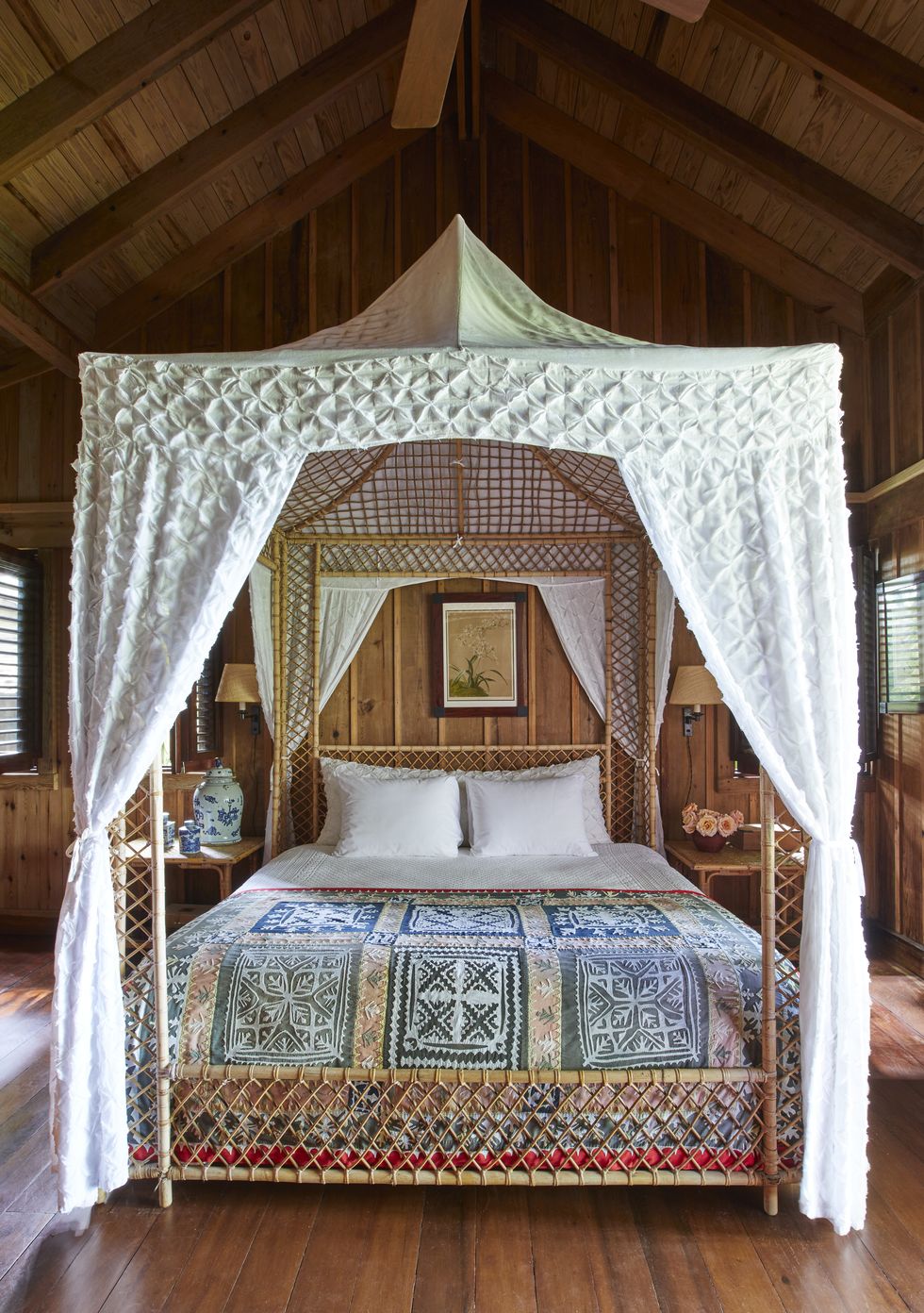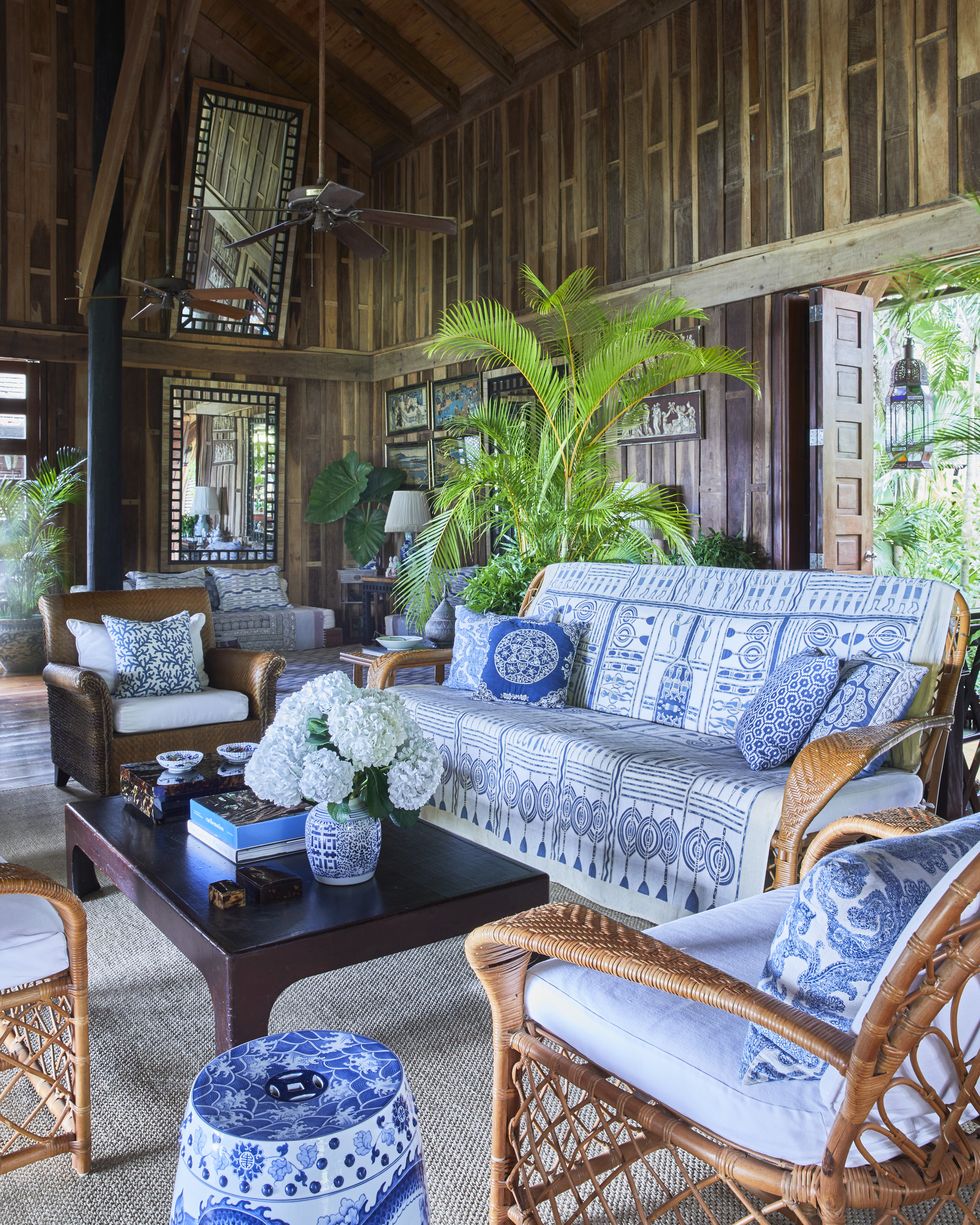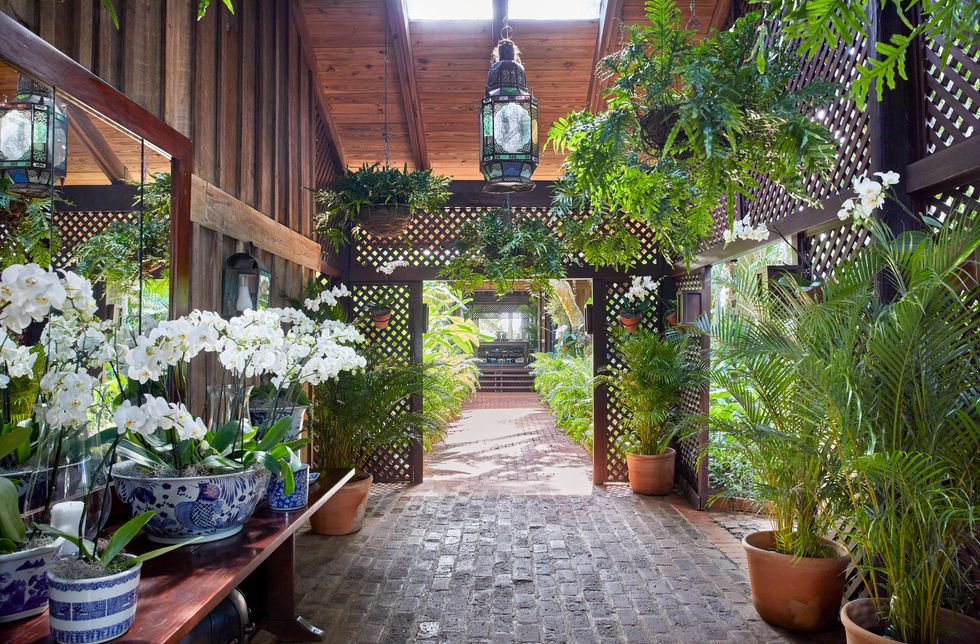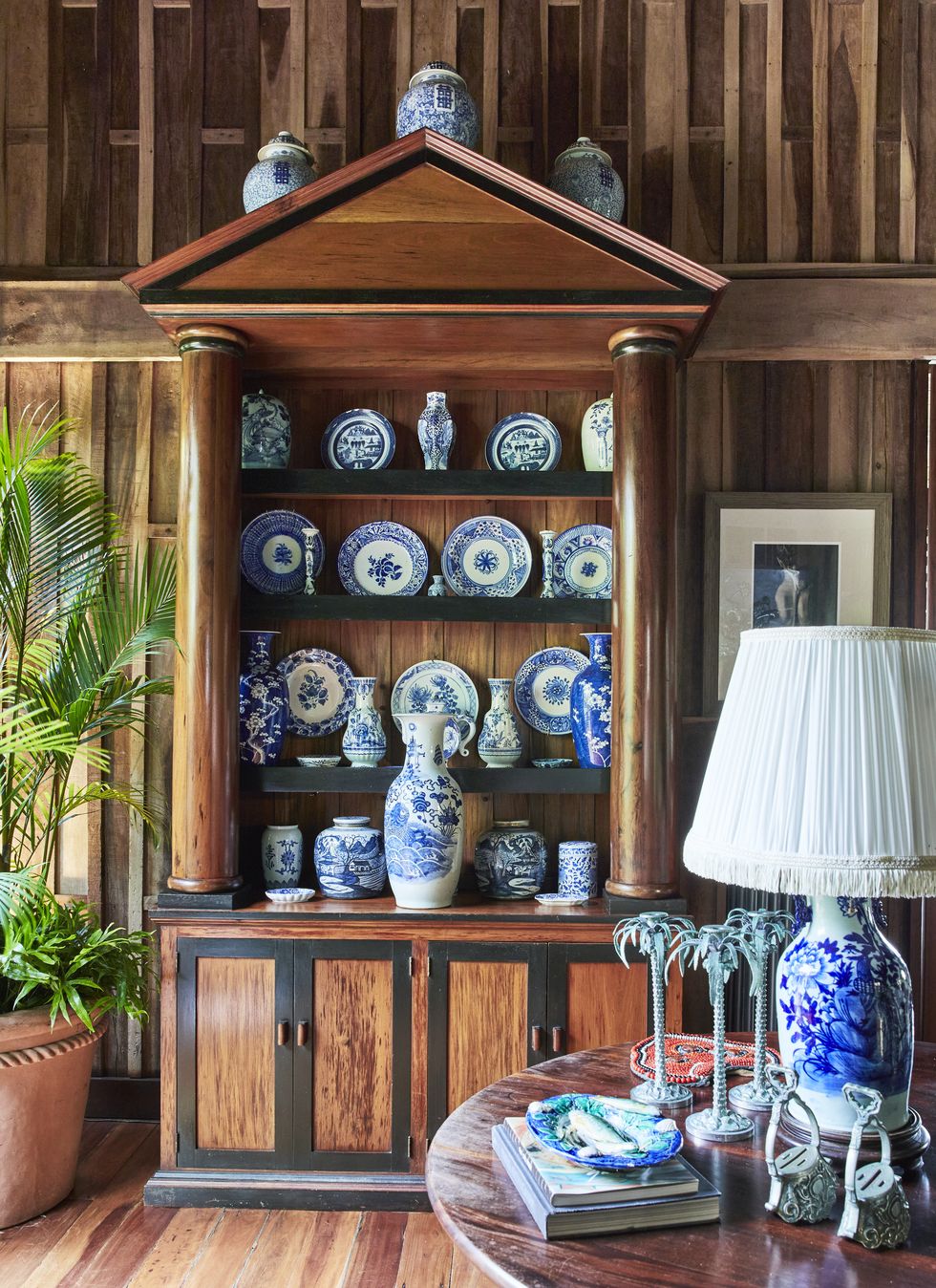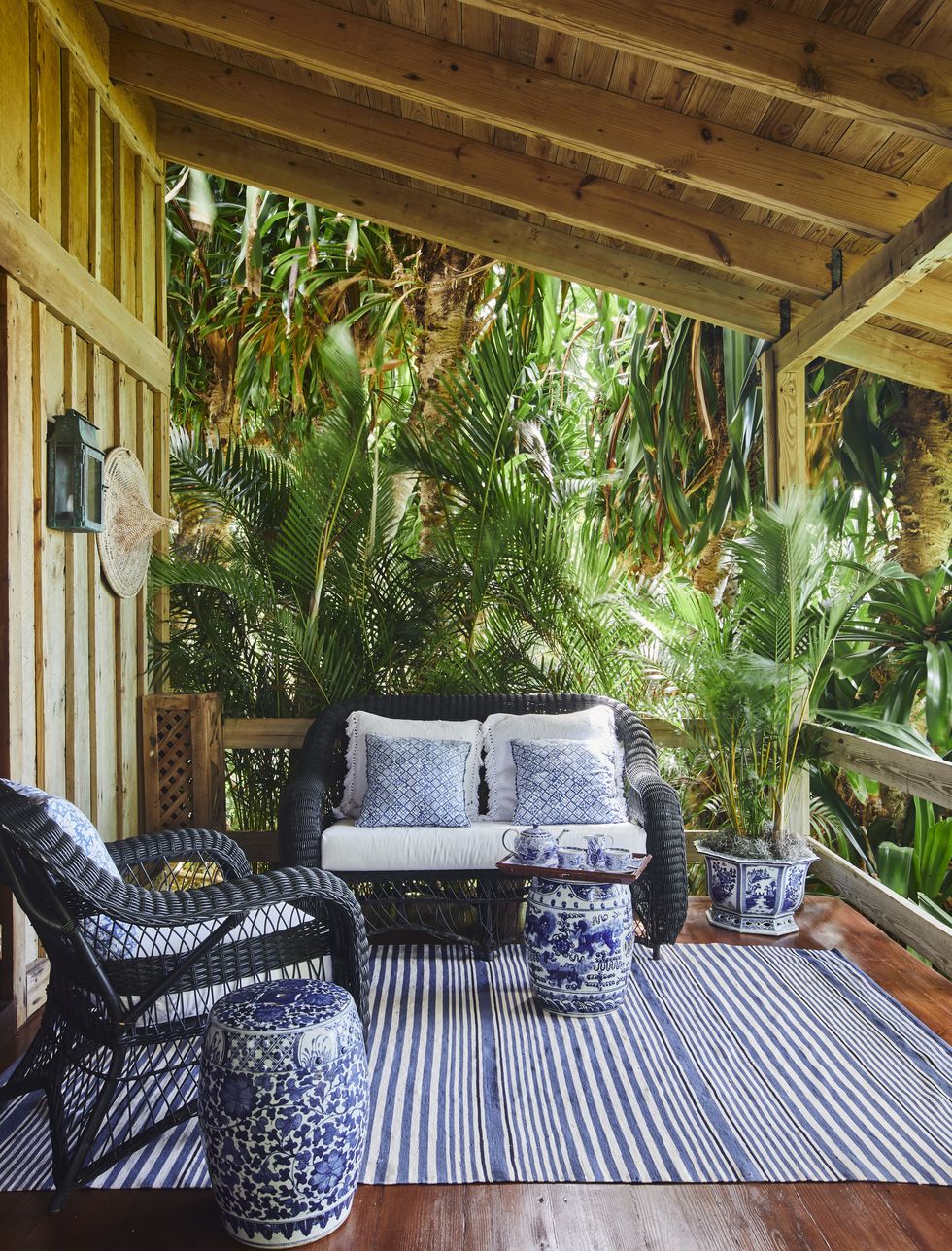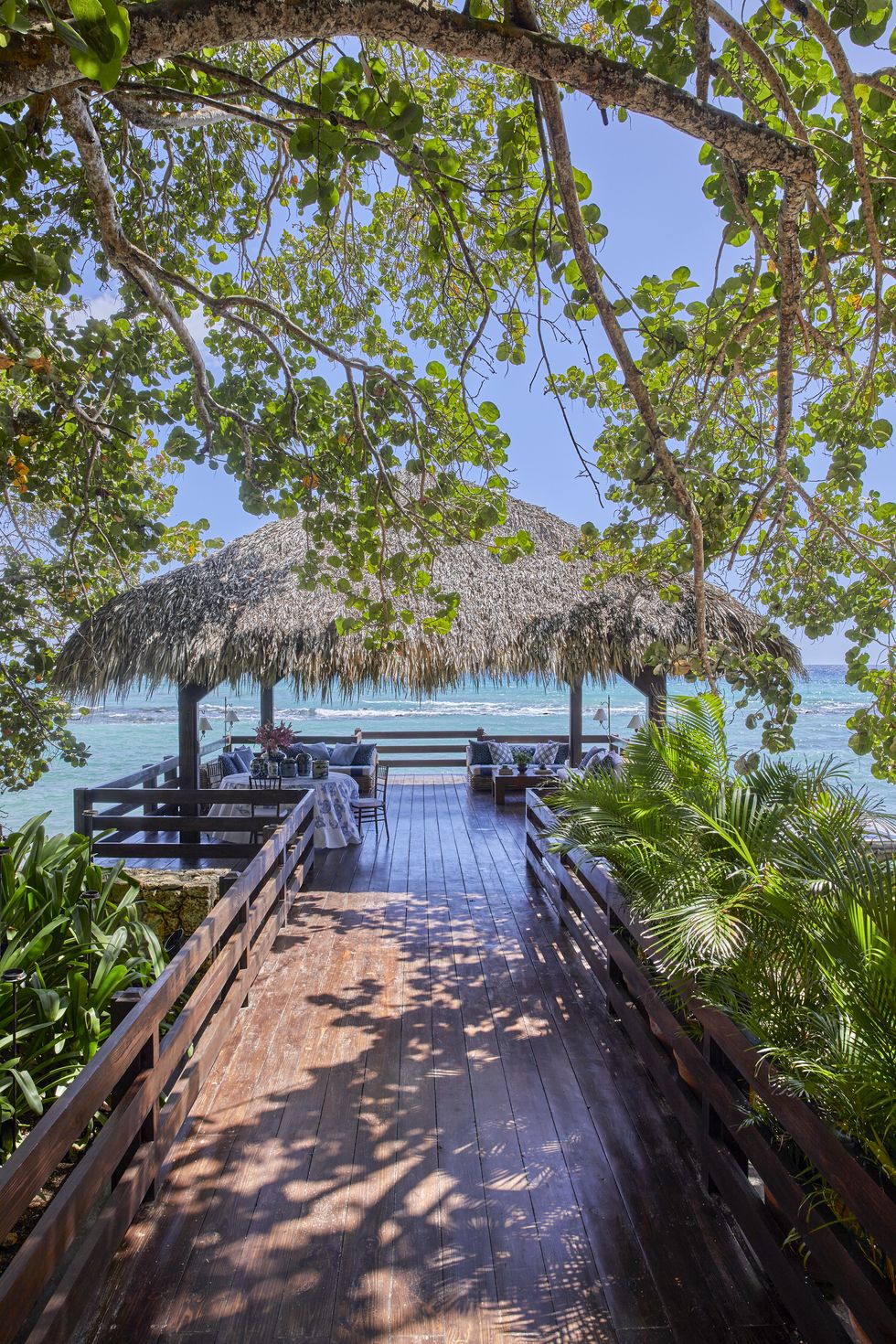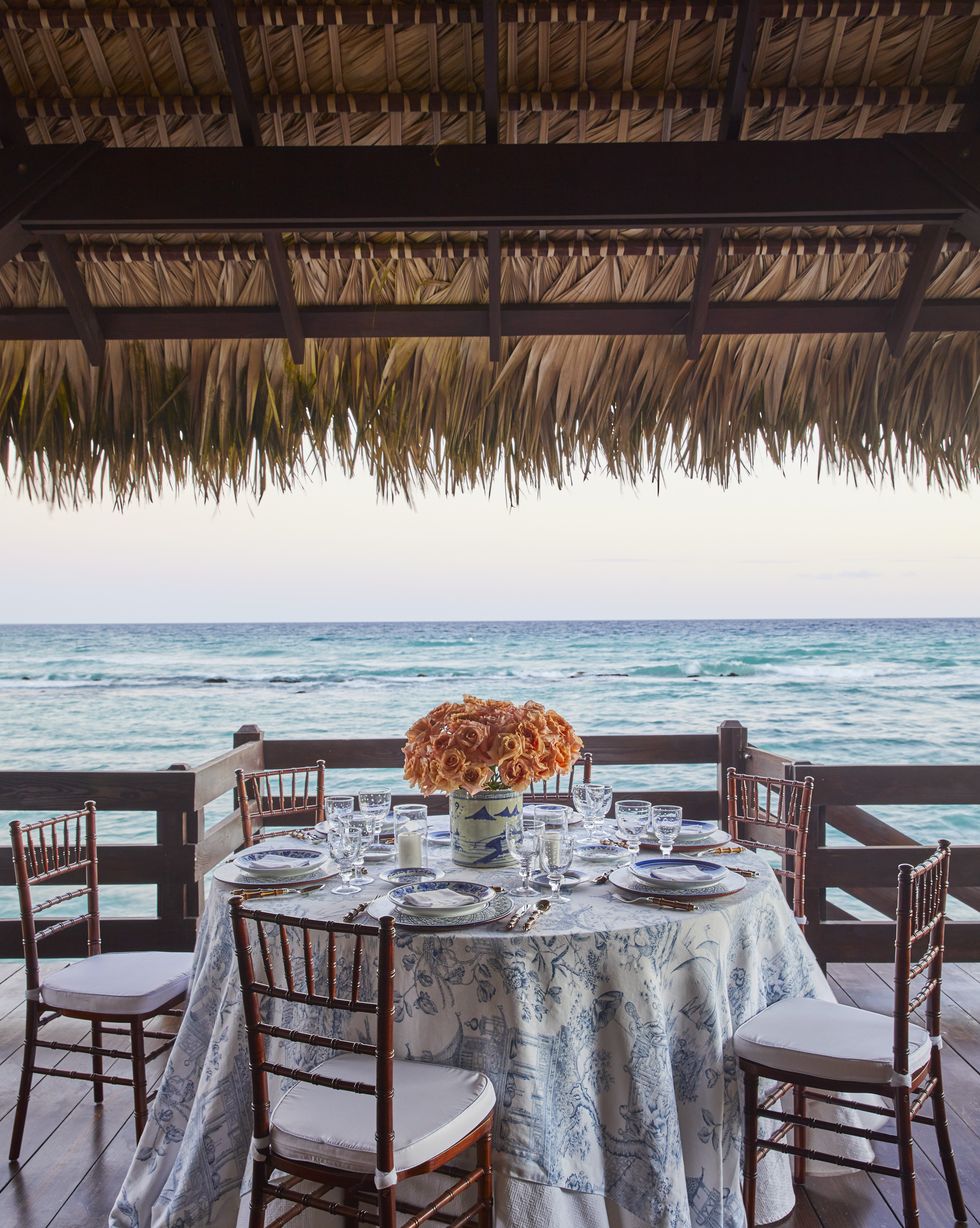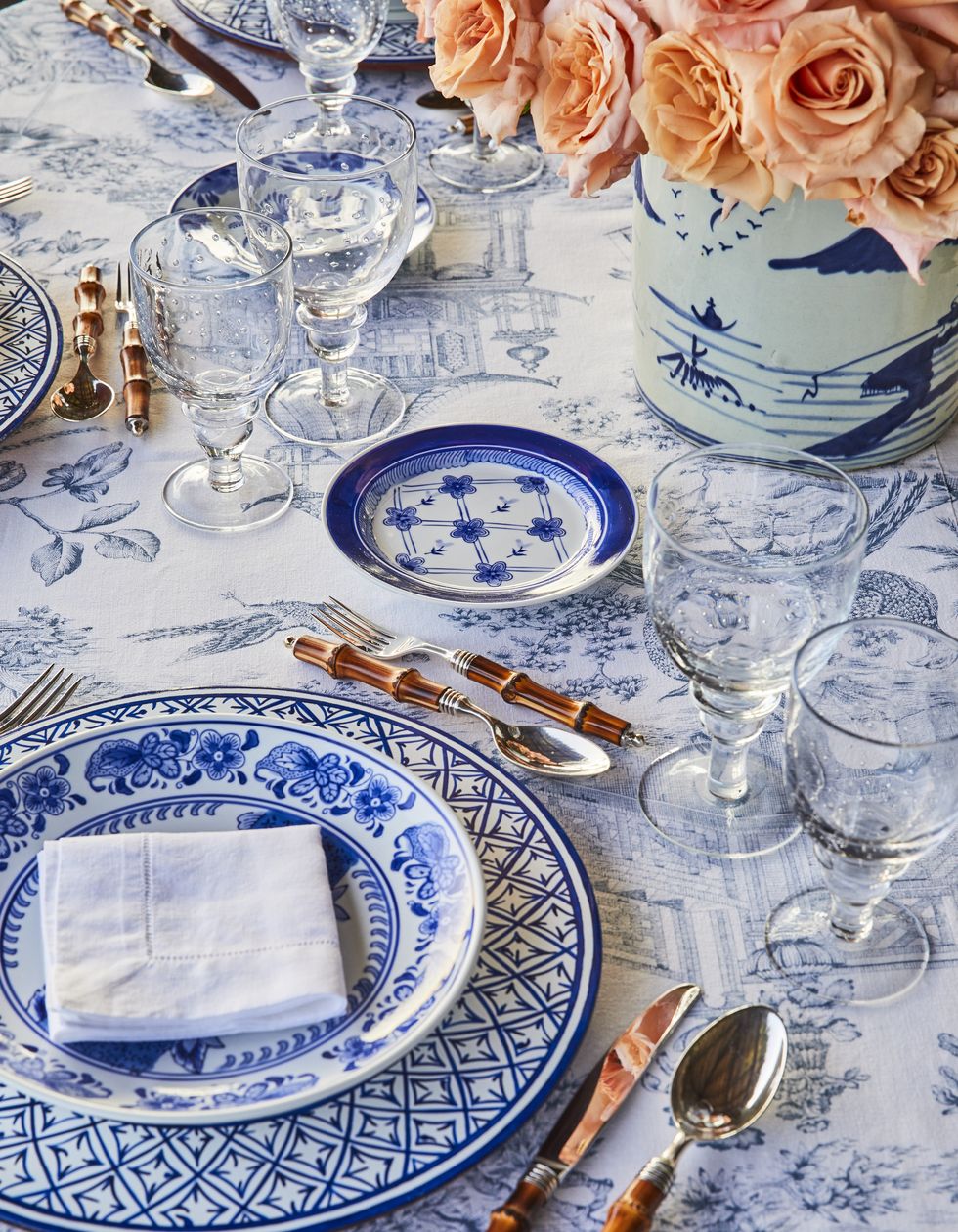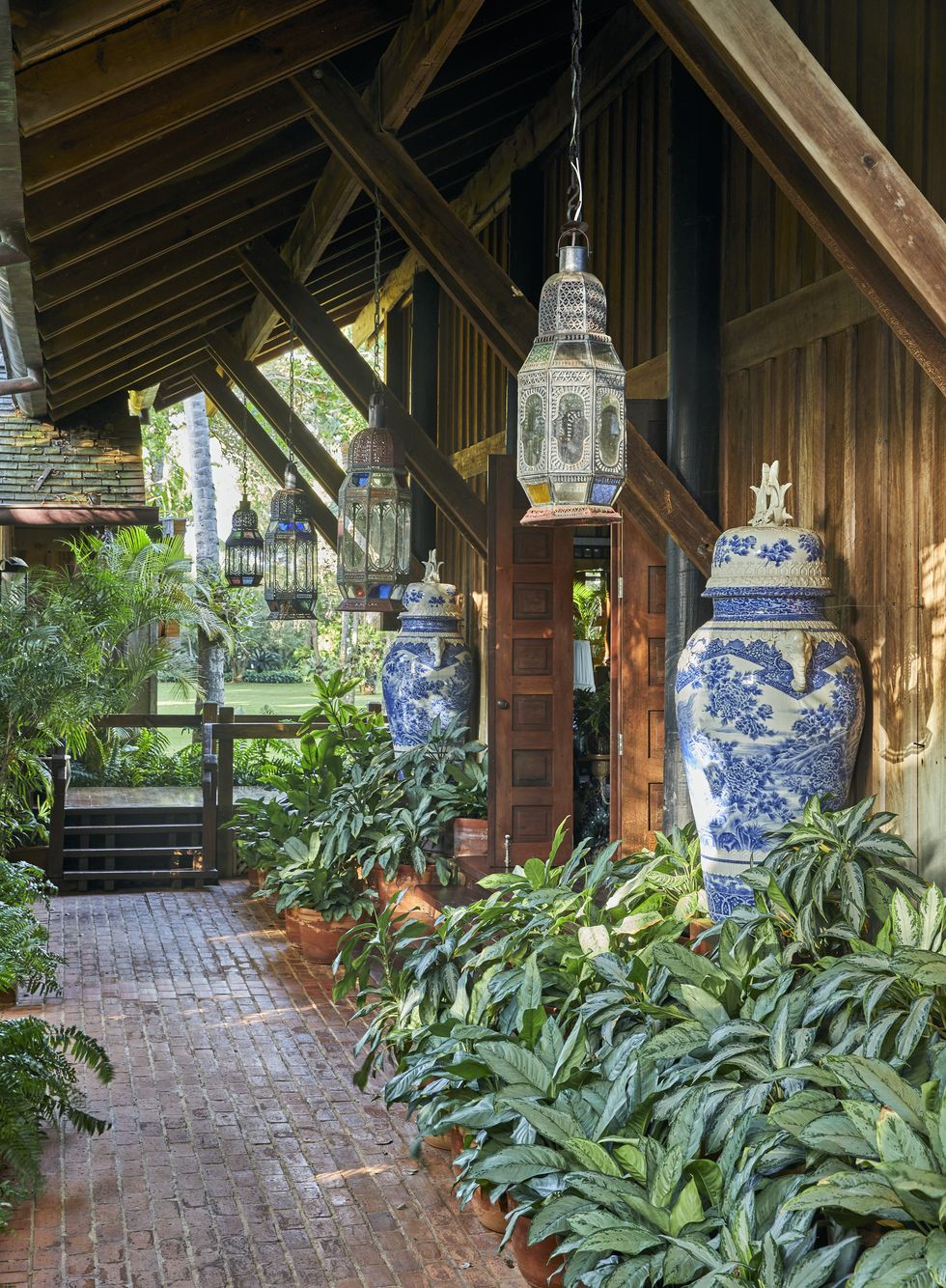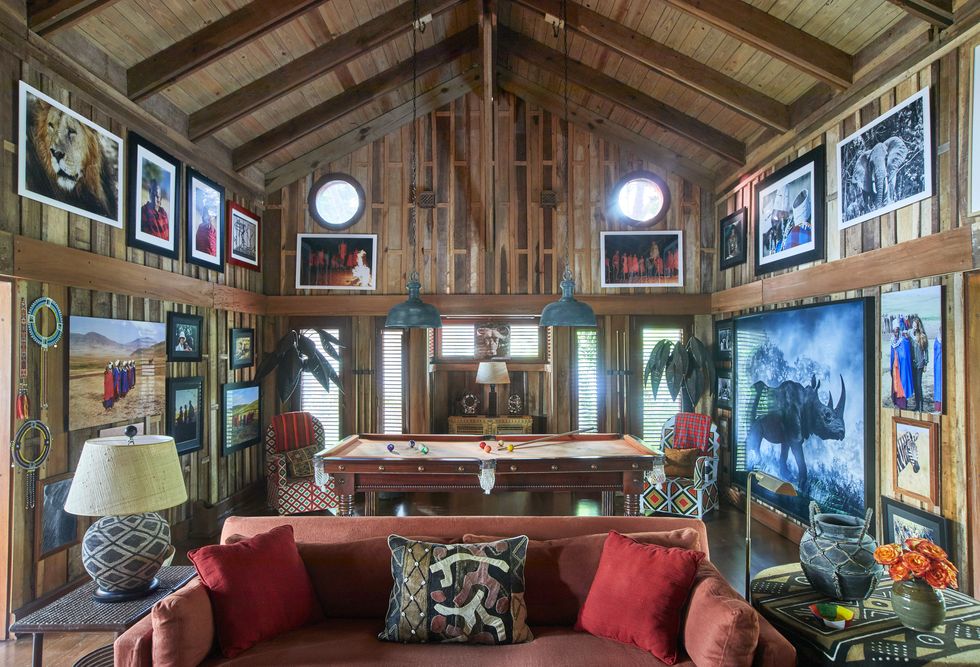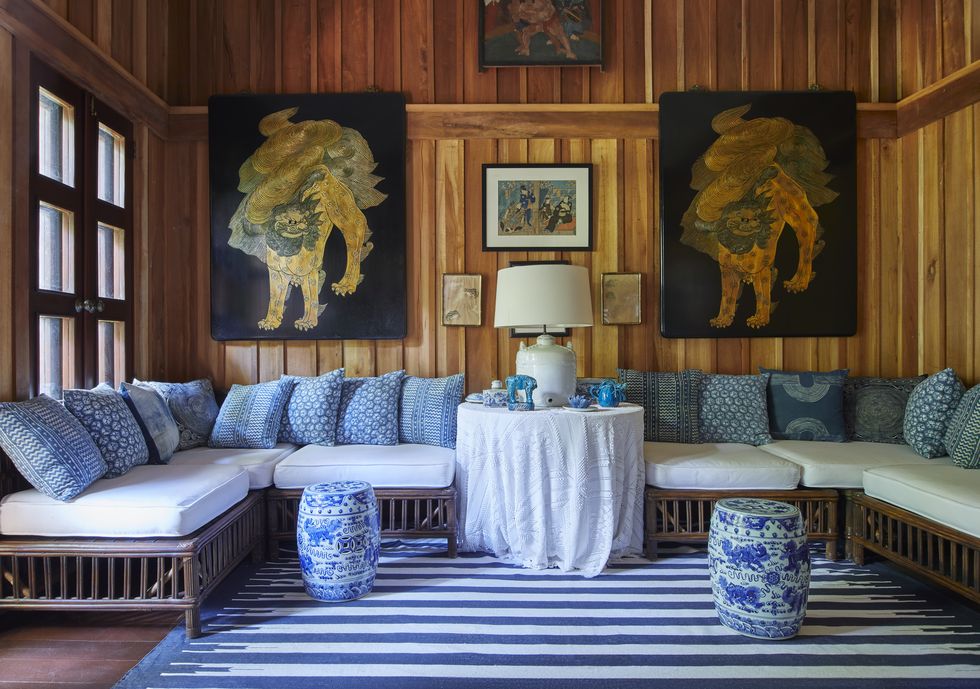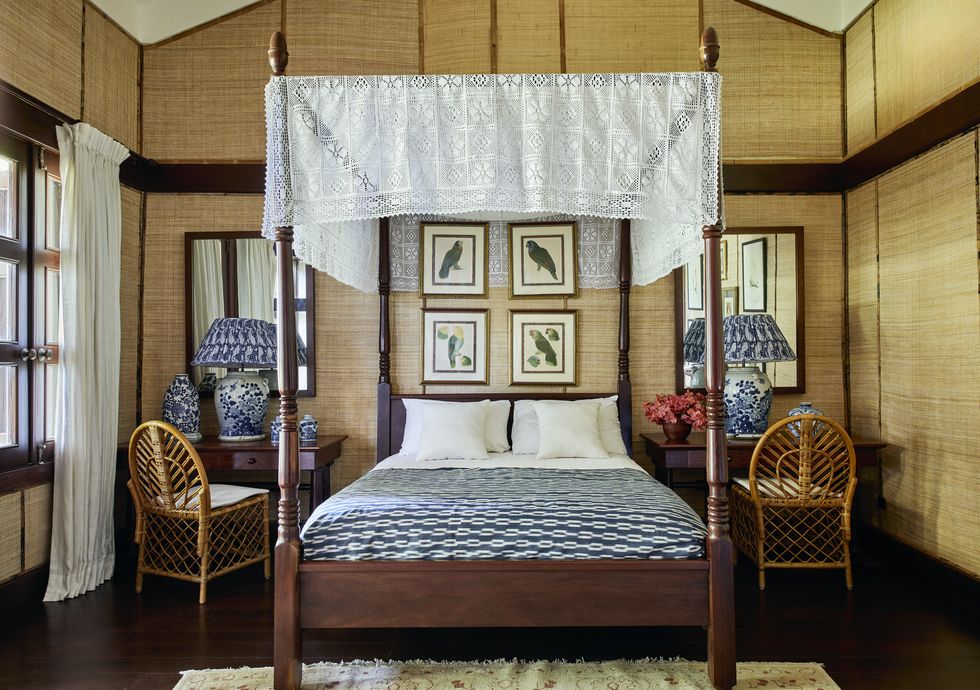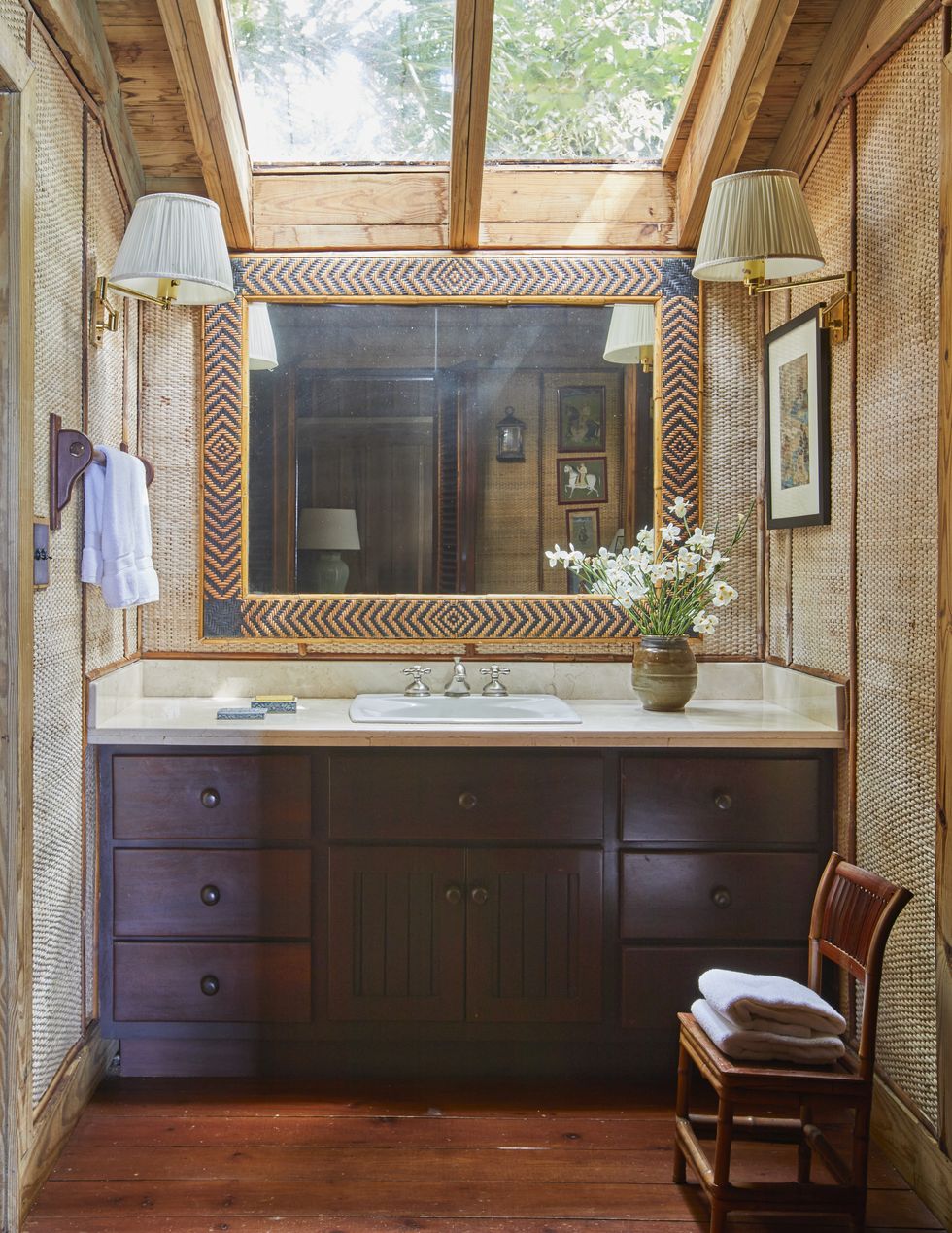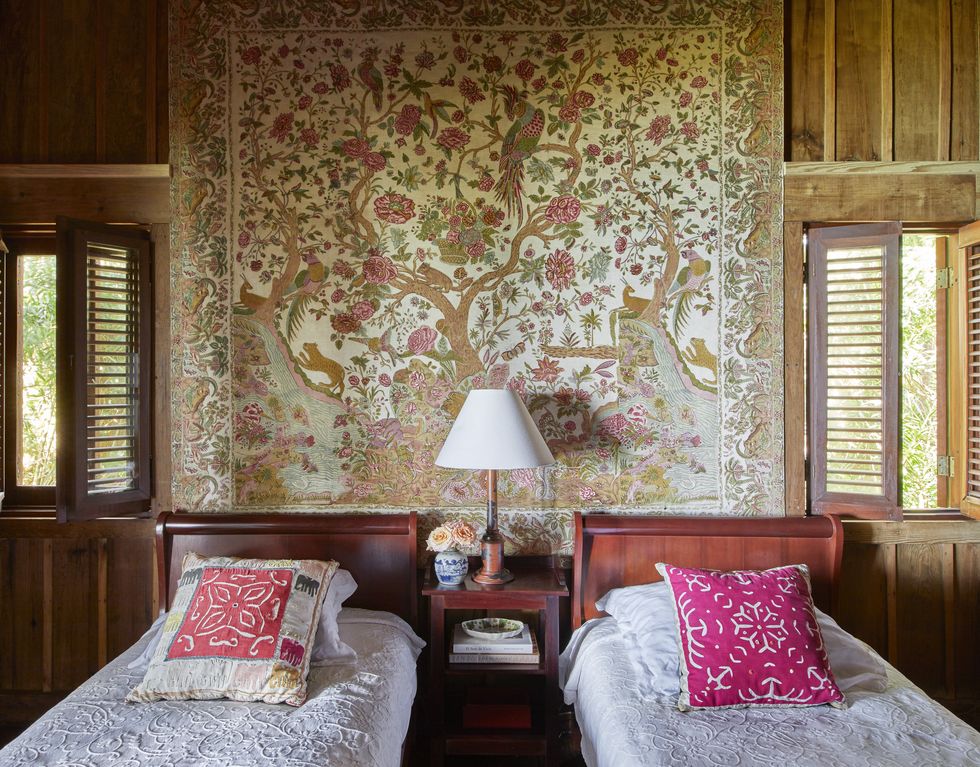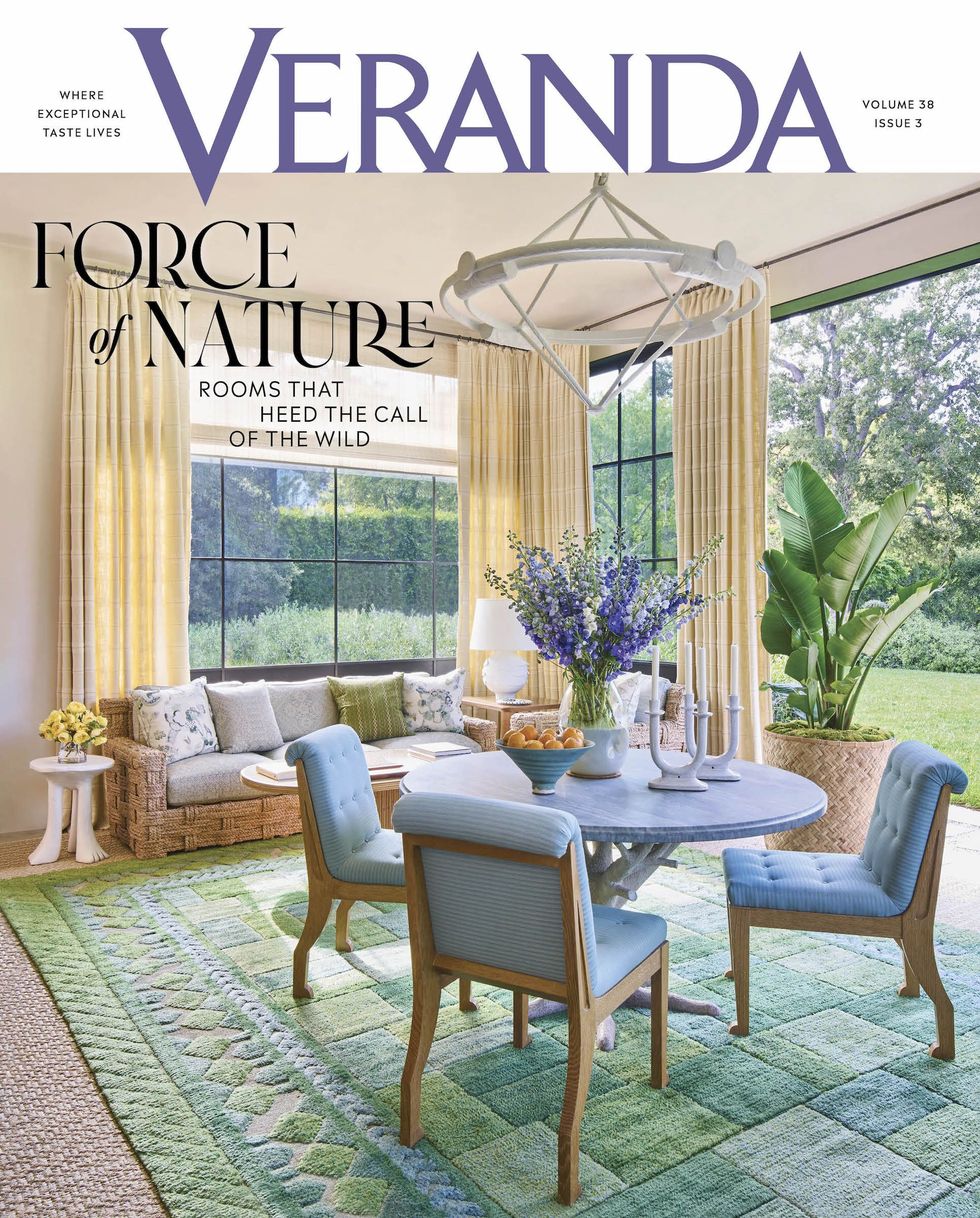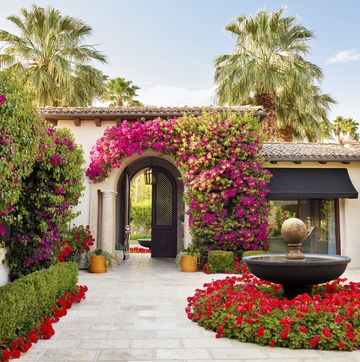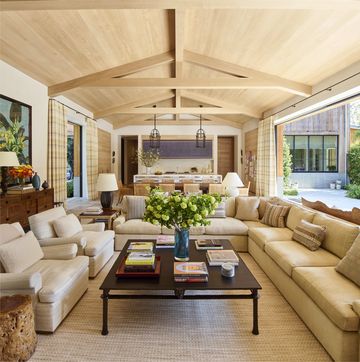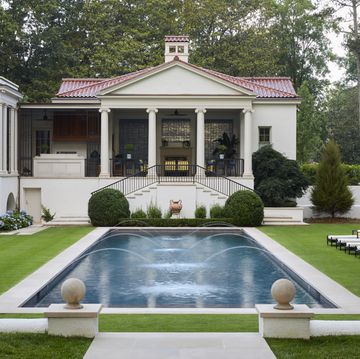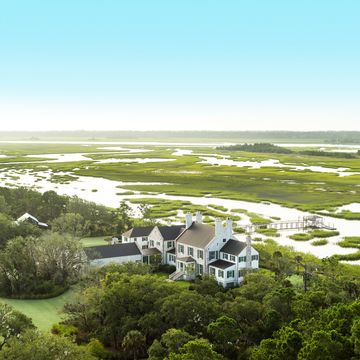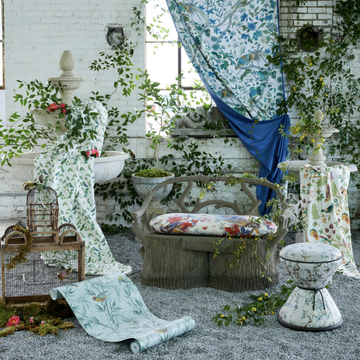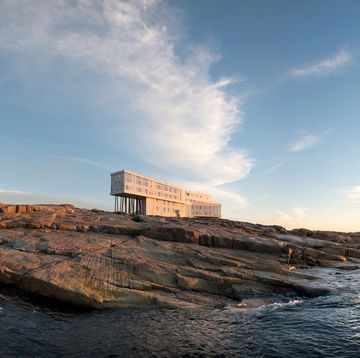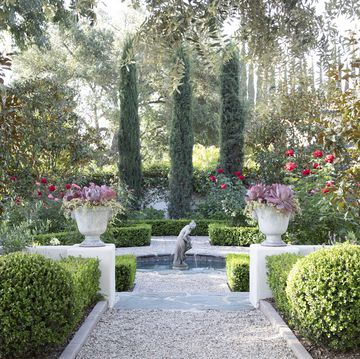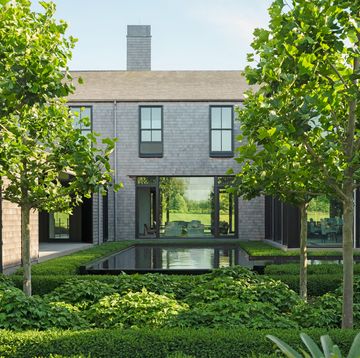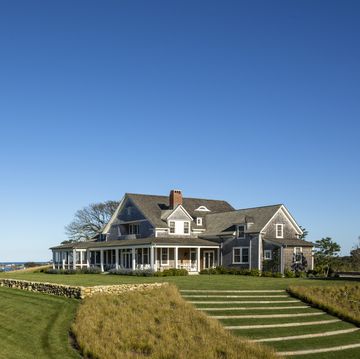London decorator Philip Vergeylen's career has taken him to some of the world’s most spectacular properties and landed him and partner Paolo Moschino on every best designer list there is. Yet even Vergeylen was at a loss to describe his emotion when his longtime clients brought him to the Dominican Republic and the storied Casa de Campo property that was to be his next assignment.
“I had to pinch myself,” he confesses. “I thought, This is as close to heaven as you will ever get.” Set upon a large green lawn stretching all the way to the turquoise waters of the sea, the Balinese-inspired house was enchanting. Though somewhat fatigued from wear and a succession of owners, its spirit was intact, and its provenance was as glamorous as it was distinguished.
When built in the 1970s by legendary fashion designer and Dominican Republic native Oscar de la Renta and first wife Françoise de Langlade, Casa de Madera (House of Wood) was the epitome of relaxed elegance and unselfconscious chic. Photographed by Horst P. Horst for Vogue in 1974, the house was described by its stylish owners much as it would be today.
Said the couple 50 years ago: “To us the luxury of having a beach house is to be able to walk barefoot into the living room and sit without worrying if your bathing suit is wet. Everything costs the minimum. Everything is replaceable and washable....Apart from a few batiks, all the pillows and cushions...are natural canvas or white handkerchief linen....A house on the sand, surrounded by blue water, should be cool and dim inside.”
Neither the house nor Vergeylen had anything to prove. The most tasteful of templates was in place, and the Belgian-born designer had the grace and good sense to follow it. “I always try to respect the house and the background, the history, the location. There was just a feeling of gentle sophistication. Nothing was flashy, but everything was comfortable. And of course I wanted to keep the blue-and-white scheme.”
Some porcelain from de la Renta’s day remained, and Vergeylen added to it, thanks to a source in China who makes it “like it is 200 years old.” The iconic pagoda bed of woven bamboo was canopied in simple white cotton. Batik throws were brought from south of France flea markets. Cane and rattan furnishings were melded with colonial antiques. Woodwork, paneling, and pottery were restored or crafted by local artisans, supporting the community in the process. The main pavilion comprises an expanse of combined living and dining space, opening to several seating areas and great, wide doors leading outside.
Both the arrangement of rooms and clever hanging of mirrors along soaring walls catch the sparkle of the sea, affording ocean views from everywhere. The mirrors also allow guests to see and hear each other from one area to the next. (Gossipers and whiners, be warned.)
“The acoustics are wonderful,” Moschino chimes in mischievously. “You’re sitting here and Philip is over there, and you say, ‘Yes, Philip, I know what you just said.’” Laughing, he adds, “It’s wonderful though, and because of the mirrors, you don’t feel excluded. Wherever you’re sitting, you see the other people.” Such thoughtful design elements throughout the house reflect consummate and generous hosts.
By every chair, there are a notepad, pencils, and telephone. Alongside such refreshingly low-tech relics is the blessed absence of inscrutable lighting. Illumination is by lamp and wall switch. There are lots of pillows, some of them squashed or a little worn. “It is old-fashioned comfort,” Vergeylen says. “It isn’t about showing off,” which is something coming from someone the London Times called one of the city’s “grandest interior designers.”
Minus the grandness, “it’s impressive the way it impacts you,” he says. “It’s not about the individual objects. It’s the whole thing. The whole house is a painting.” It is an artful representation, however, and not a copy. “What you see is my interpretation of what was started by Oscar de la Renta.”
Like paintings, houses are manifestations of their creators’ visions. With stewardship and care, well-loved houses might outlast their well-loved creators, but they keep their memories alive for the ages.
Breezeway
Lining the breezeway, potted orchids, elkhorn ferns, and palms as well as colorful Moroccan lanterns usher in a tropical, global air.
Great Room
Casual refinement reigns, thanks to locally made furnishings (the mahogany mirror, sofa, coffee table, and chairs) and timeless textiles (sofa cushions, Paolo Moschino).
An original de la Renta cabinet displays Chinese porcelain.
Terrace
Black wicker seating and a blue-and-white rug (both by Paolo Moschino) ground the terrace.
Gazebo
The spirit of hospitality extends to the gazebo, where dining and lounging is accompanied by Caribbean breezes.
Dinner on the dock is served under a canopy of dried palms. Flatware and dinnerware, Buccellati
The bungalow’s blue-and-white palette extends to the gazebo’s dining table, with Buccellati tableware.
Pathway
Giant Chinese urns (from Oscar de la Renta’s collection) seemingly grow out of the aglaonemas lining a brick pathway. The Moroccan lanterns are from Marrakesh.
Billiards Room
The billiards room reflects the owners’ passion for Africa, featuring photographs taken while on safari and vintage African beaded armchairs. Table lamp, shade, and sofa, Paolo Moschino
Small Sitting Room
A pair of 19th-century Chinese coromandel screens stand guard over the small sitting room’s custom sectional, dressed in an oyster-hued Paolo Maschino linen. Indonesian batik cotton fabrics cover the pillows, and the Dhurrie is from India.
Casa Loro Bedroom
The Casa Loro bedroom is wrapped in warm rattan, with a canopy bed crowned in woven Portuguese cotton as the centerpiece. A pair of 19th-century English mahogany desks also serve as nightstands. Lamps, Paolo Moschino
Primary Bath
A vintage child’s bamboo chair becomes a perch for towels in the primary bath. The custom mirror is from Tangier.
Casa Larimar Bedroom
A vintage cotton tree-of-life print climbs above Casa Larimar’s pair of locally made mahogany twin beds.
Featured in our May/June 2024 issue. Interior Design by Philip Vergeylen; Landscape Design by Omar Garrido; Photography by Ricardo Labougle; Produced by Cynthia Frank; Written by Frances Schultz.

